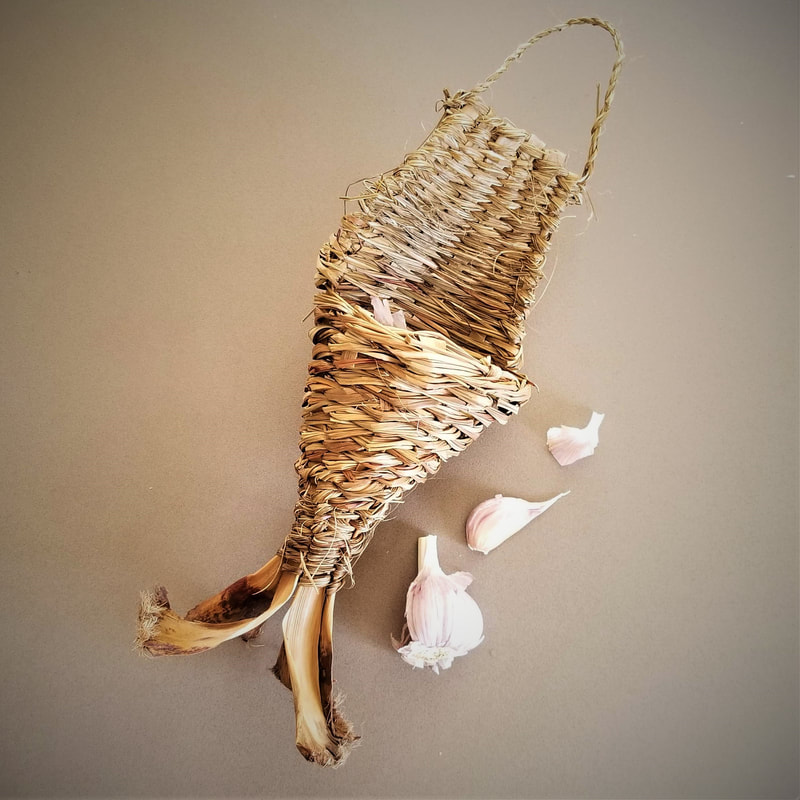Garlic Basket Workshop
This design utilizes the naturally curved ends of cordyline australis for the base and as a structural frame to twine around.
|
The garlic basket is made by 'twining' a pair of natural plant fibre 'weavers' around a framework of cordyline which createsa vase shape with the end of the cordyline forming a 'tail'.
Commencing with instruction in how to make cordage as a basis for understanding the 'twining' method, in this workshop, you will learn: *Which plant fibres to use and how to prepare them *How to 'twine' around the frame *How to form the opening *How to finish your basket Not a fan of garlic? The beauty of this method is that it can quite readily be adapted. Students are invited to design their own version of the garlic basket once the basic shape is established. Shape options include either goblet style, a half goblet with a back or continue to weave and shape the basket into a fish. Stick to natural plant fibres or weave in colourful feature elements as the vase shape grows to personalise the design. I acknowledge my teacher, basketmaker Joy Beeby for teaching me this method, which is most certainly an Australian design, popularised by Victorian basketmakers. What to bring: An old towel, a peg, sturdy garden scissors, a water spray bottle, a darning needle and a waterproof bag for taking home your damp towel. Recommended follow on workshop Melon Basket
|
Dates
Saturday 14th September 9am - 3pm
at Willow, Violet and Flora Farm, Hamilton Highway, Tarrington
A sit down Lunch is included in the day at the Flower Farm
Please contact Lisa Addinsall directly for further info and booking details
[email protected]
at Willow, Violet and Flora Farm, Hamilton Highway, Tarrington
A sit down Lunch is included in the day at the Flower Farm
Please contact Lisa Addinsall directly for further info and booking details
[email protected]




